.

People looking for survivors on Monday at a site hit previously by an
airstrike in the rebel-held Tariq al-Bab neighborhood of Aleppo, Syria: photo by
Abdalrhman Ismail/Reuters, 26 September 2016

People looking for survivors on Monday at a site hit previously by an
airstrike in the rebel-held Tariq al-Bab neighborhood of Aleppo, Syria: photo by
Abdalrhman Ismail/Reuters, 26 September 2016

A bus burned on Sunday after a reported airstrike in Aleppo. Hundreds of people have been killed in the city since Thursday: photo by Ameer Alhalbi/Agence France-Presse, 26 September 2016

A
bus burned on Sunday after a reported airstrike in Aleppo. Hundreds of
people have been killed in the city since Thursday: photo by
Ameer Alhalbi/Agence France-Presse, 26 September 2016

Rescue workers and residents carrying the body of a victim on Sunday after a reported airstrike in a rebel-held area of Aleppo, Syria: photo by Ameer Alhalbi/Agence France-Presse, 25 September 2016

Rescue workers and residents carrying the body of a victim on Sunday after a reported airstrike in a rebel-held area of Aleppo, Syria: photo by Ameer Alhalbi/Agence France-Presse, 25 September 2016

Members of the Syrian Civil Defense group recovered a body after airstrikes on Saturday in the contested city of Aleppo. More than 90 people died on Friday, and more than 100 on Saturday.: photo by Syrian Civil Defense White Helmets, via Associated Press, 25 September 2016

Members of the Syrian Civil Defense group recovered a body after airstrikes on Saturday in the contested city of Aleppo. More than 90 people died on Friday, and more than 100 on Saturday.: photo by Syrian Civil Defense White Helmets, via Associated Press, 25 September 2016

Rescue workers and residents carrying the body of a victim on Sunday after a reported airstrike in a rebel-held area of Aleppo, Syria: photo by Ameer Alhalbi/Agence France-Presse, 25 September 2016

Rescue workers and residents carrying the body of a victim on Sunday after a reported airstrike in a rebel-held area of Aleppo, Syria: photo by Ameer Alhalbi/Agence France-Presse, 25 September 2016

Members of the Syrian Civil Defense group recovered a body after airstrikes on Saturday in the contested city of Aleppo. More than 90 people died on Friday, and more than 100 on Saturday.: photo by Syrian Civil Defense White Helmets, via Associated Press, 25 September 2016

Members of the Syrian Civil Defense group recovered a body after airstrikes on Saturday in the contested city of Aleppo. More than 90 people died on Friday, and more than 100 on Saturday.: photo by Syrian Civil Defense White Helmets, via Associated Press, 25 September 2016

Matthew Rycroft, the British ambassador to the United Nations, speaking on Sunday with his American counterpart, Samantha Power, during a Security Council meeting in New York.: photo by Andrew Kelly/Reuters, 25 September 2016

Matthew Rycroft, the British ambassador to the United Nations, speaking on Sunday with his American counterpart, Samantha Power, during a Security Council meeting in New York.: photo by Andrew Kelly/Reuters, 25 September 2016

A makeshift hospital in Syria. Heavy Syrian and Russian bombardments of rebel-held areas in eastern Aleppo have overwhelmed doctors and rescue workers.: photo by Karam Al-Masri/Agence France-Presse, 24 September 2016

A makeshift hospital in Syria. Heavy Syrian and Russian bombardments of rebel-held areas in eastern Aleppo have overwhelmed doctors and rescue workers.: photo by Karam Al-Masri/Agence France-Presse, 24 September 2016
Joseph Ceravolo: Legacy (Going Back)
May 1, 1984
Oh young of this world!
Oh young of this world!
What is it that the ancient erupts?
Even in the midst
of silicon chips and endless terminals,
slick musicals, advertisement,
and business journals
mind-warping takes the masses
so that an elite
of control and money again subjugates
human minds beyond the scope of death
Half-minds caught up in gain
thinking that a little ditty
or clever idea makes
a genius with cause to forego others
for the sake of money and power,
little hard ants of self ingratiation
bragging about success
without a universal thought
or thought of human suffering,
upon which much of their
success is built.
But who needs communism,
that contemporary refuge
from material subjugation
into a newer human subjugation?
I want to go back to the Pond
and transcendent destinies
back to that innocent belief that
to be stubborn for a harmless cause
is a spiritual awakening,
that real freedom is to contemplate
and not lose ground or starve or die
without honor or love,
back to the mystery
of the individual
and of the people
though rash, proud and narrow
still manage to taste the flowers
of love brush their lips
and beauty touched once before death,
back to the lava of the dream
spurting from inside,
flowing into the real
O young of this ancient world
we leave you
to the perpetual danger of the galaxy
of which we have no stroke
but like a tree or an ant
live and die,
and maybe live again.
of which we have no stroke
but like a tree or an ant
live and die,
and maybe live again.
Joseph Ceravolo (1934-1988): Legacy (Going Back), 1 May 1984, from Collected Poems, 2012

2016, ya'll: image via Victor Ng @victomato, 25 September 2016
A woman looks towards part of an artwork called ‘Lichen! Libido! (London!) Chastity!’ by Anthea Hamilton, one of the four artists shortlisted for the Turner Prize 2016, at the Tate Britain gallery, on Monday: photo by Kirsty Wigglesworth/AP. 26 September 2016
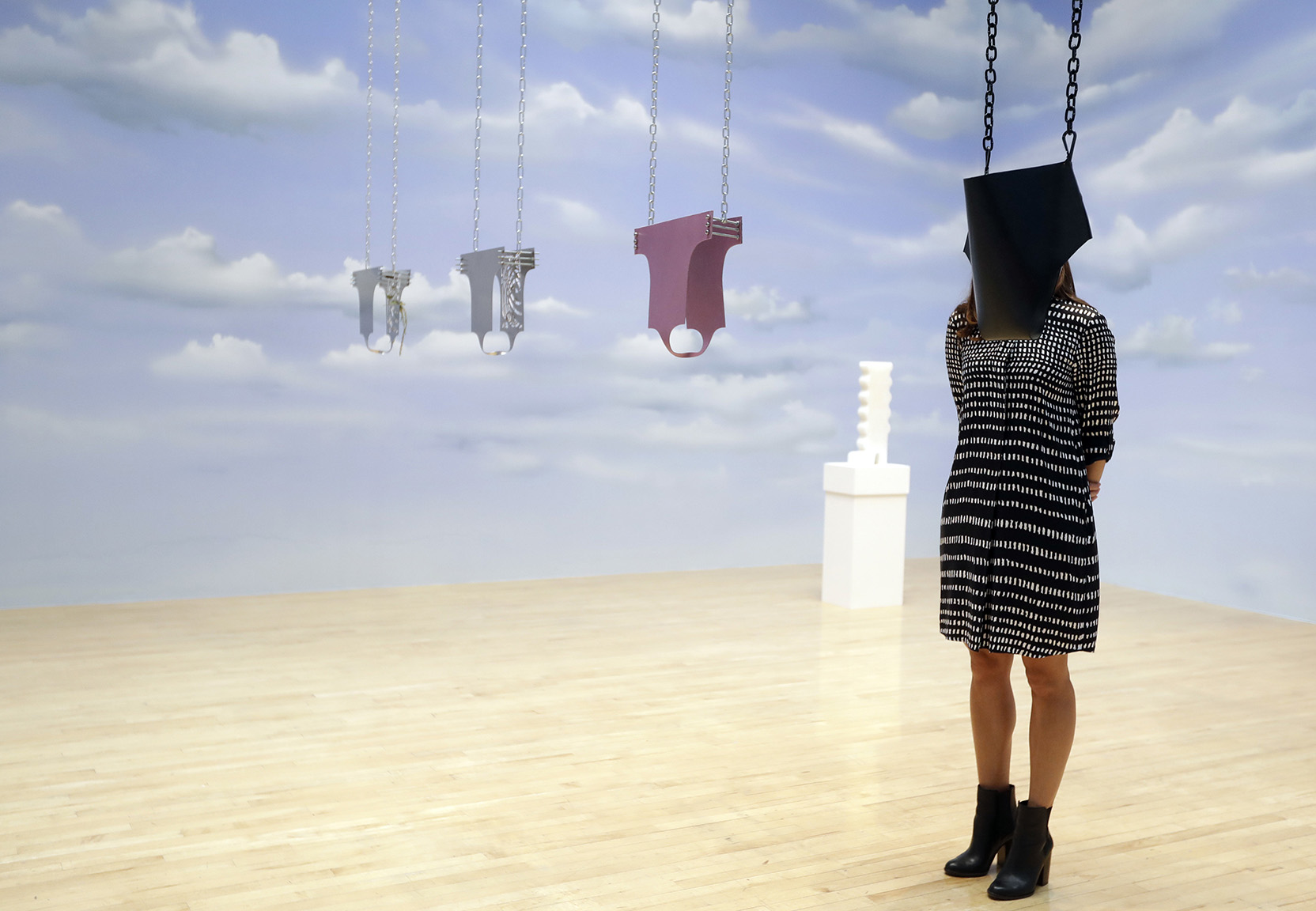
A woman looks towards part of an artwork called ‘Lichen! Libido!
(London!) Chastity!’ by Anthea Hamilton, one of the four artists
shortlisted for the Turner Prize 2016, at the Tate Britain gallery, on
Monday: photo by Kirsty Wigglesworth/AP. 26 September 2016
Indian folk dancers from the Panghat Group of Performing Arts during a
dress rehearsal for an event to mark the forthcoming Hindu festival
‘Navaratri’: photo by AFP, 26 September 2016

Factory girls from a rural village living in a Bangalore hostel watch the street life below: photo by Andrea Bruce for The New York Times, 24 September 2016

Factory girls from a rural village living in a Bangalore hostel watch the street life below: photo by
Andrea Bruce for The New York Times, 24 September 2016

K. Mohan and Company Exports Private Limited is a world of machines: massive industrial extractors, laser cutters, a rapid-response protocol that kicks in when a needle tip breaks off.: photo by Andrea Bruce for The New York Times, 24 September 2016 
K. Mohan and Company
Exports Private Limited is a world of machines: massive industrial
extractors, laser cutters, a rapid-response protocol that kicks in when a
needle tip breaks off.: photo by Andrea Bruce for The New York Times, 24 September 2016 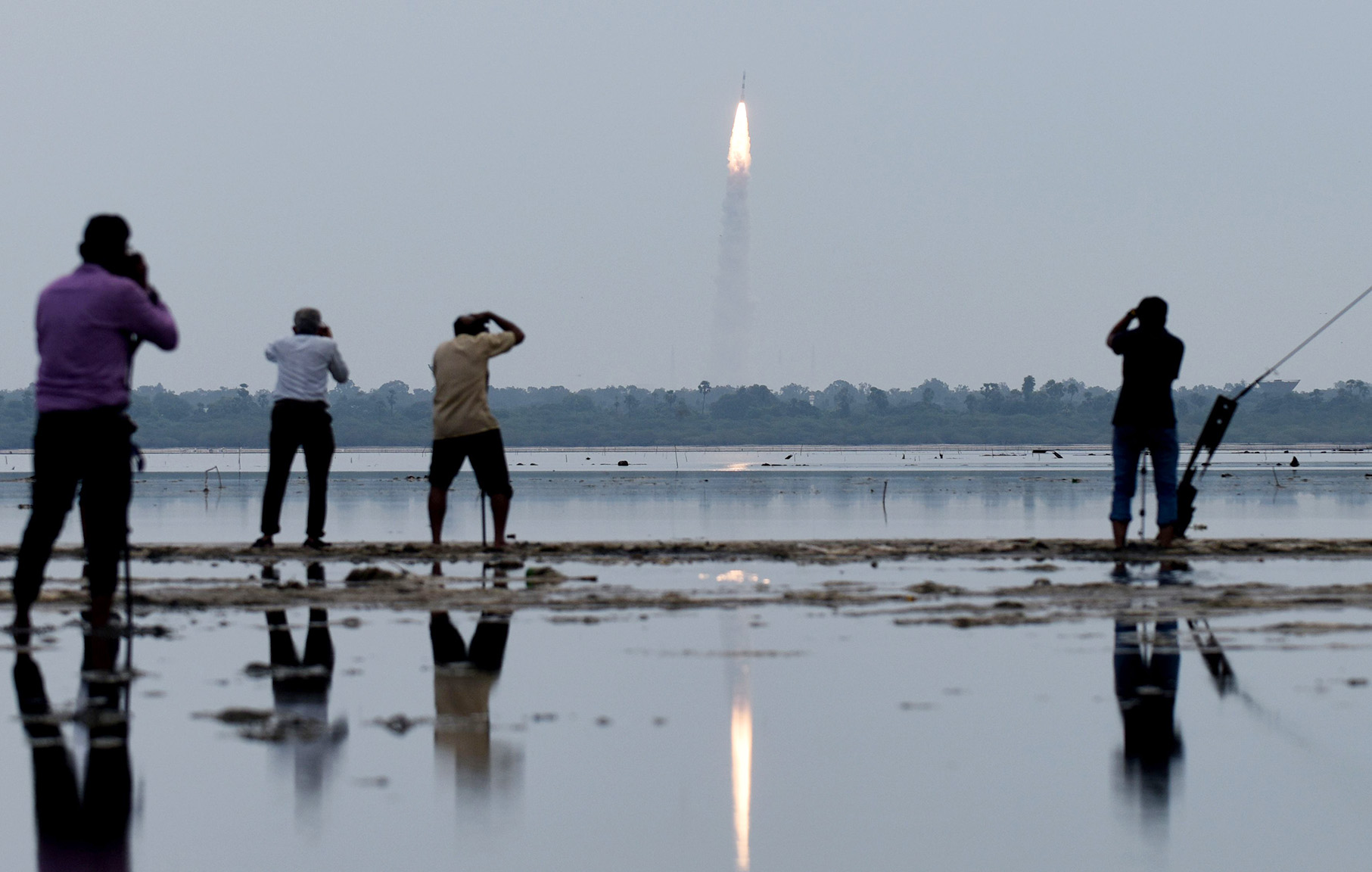
Indian residents photograph the launch of the Indian Space Research Organisation (ISRO) Polar Satellite Launch Vehicle (PSLV-C35), on Monday: photo by AFP, 26 September 2016


Factory girls from a rural village living in a Bangalore hostel watch the street life below: photo by Andrea Bruce for The New York Times, 24 September 2016


K. Mohan and Company Exports Private Limited is a world of machines: massive industrial extractors, laser cutters, a rapid-response protocol that kicks in when a needle tip breaks off.: photo by Andrea Bruce for The New York Times, 24 September 2016


Indian residents photograph the launch of the Indian Space Research Organisation (ISRO) Polar Satellite Launch Vehicle (PSLV-C35), on Monday: photo by AFP, 26 September 2016

Indian residents photograph the launch of the Indian Space Research
Organisation (ISRO) Polar Satellite Launch Vehicle (PSLV-C35), on
Monday: photo by AFP, 26 September 2016
A woman receives a tattoo on her leg at the International London Tattoo Convention at Tobacco Dock in London, England: photo by Jack Taylor, 23 September 2016

Indian children of local boatmen play on the banks of the river Ganges in the Sangam area of Allahabad: photo by Sanjay Kanojia/AFP, 23 September 2016

Indian children of local boatmen play on the banks of the river Ganges in the Sangam area of Allahabad: photo by Sanjay Kanojia/AFP, 23 September 2016

INDIA - Children of local boatmen play on the banks of the river Ganges in the Sangam area of Allahabad. By @sanjaykanojia07 #AFP: image via Frédérique Geffard @fgeffardAFP, 23 September 2016
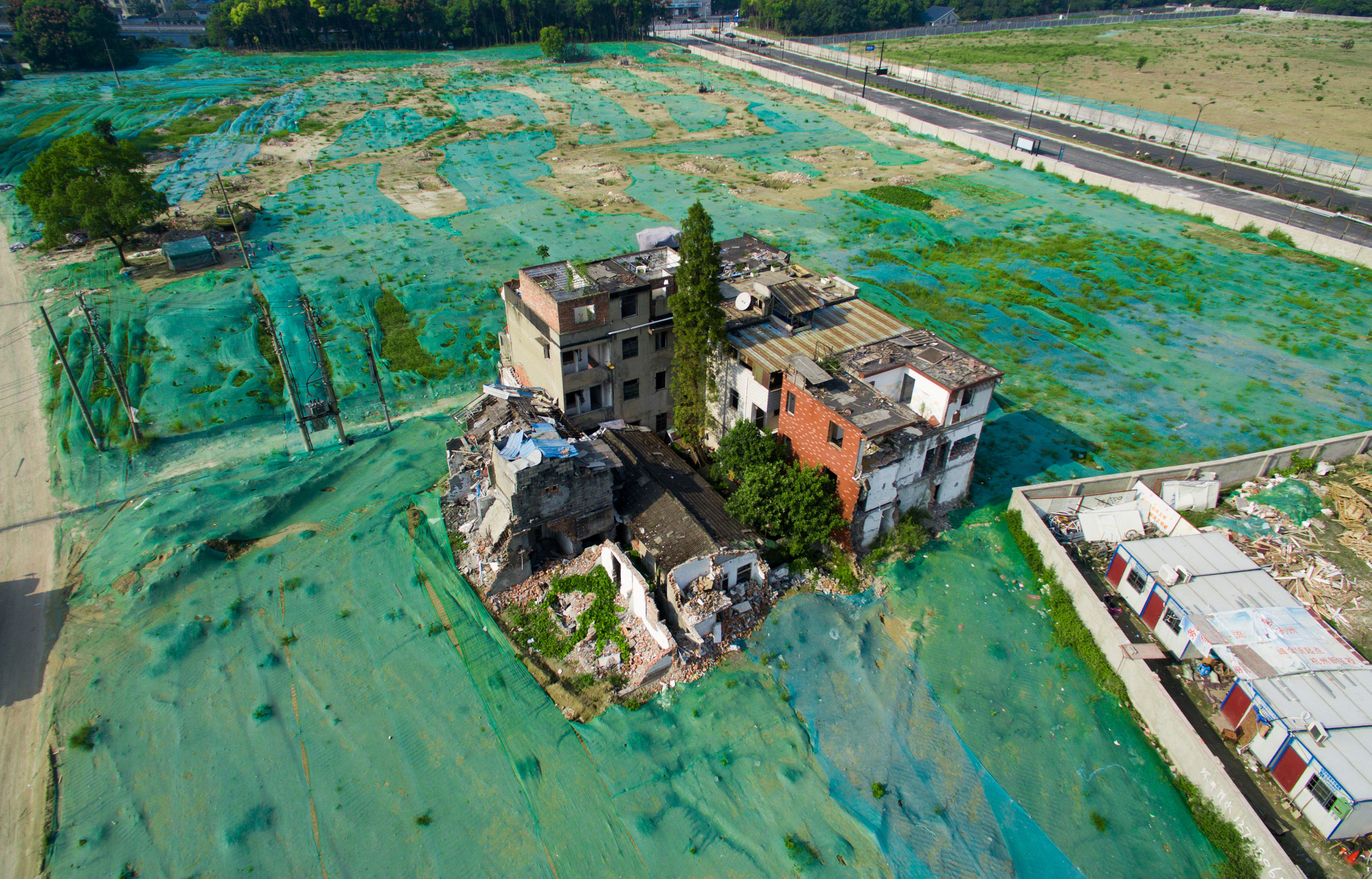
A woman receives a tattoo on her leg at the International London Tattoo Convention at Tobacco Dock in London, England: photo by Jack Taylor, 23 September 2016

A woman receives a tattoo on her leg at the International London Tattoo Convention at Tobacco Dock in London, England: photo by Jack Taylor, 23 September 2016
Indian children of local boatmen play on the banks of the river Ganges in the Sangam area of Allahabad: photo by Sanjay Kanojia/AFP, 23 September 2016

Indian children of local boatmen play on the banks of the river Ganges in the Sangam area of Allahabad: photo by Sanjay Kanojia/AFP, 23 September 2016

INDIA - Children of local boatmen play on the banks of the river Ganges in the Sangam area of Allahabad. By @sanjaykanojia07 #AFP: image via Frédérique Geffard @fgeffardAFP, 23 September 2016

A nail house is seen in the middle of an area covered by a dust screen in Hangzhou, Zhejiang province, China: photo by Reuters, 27 September 2016
Karam Al-Masri: A message to the outside world from Aleppo

Aleppo, September 2016: photo by Karam Al-Masri/AFP

Aleppo, September 2016: photo by Karam Al-Masri/AFP

Aleppo, September 2016: photo by Karam Al-Masri/AFP

Aleppo, September 2016: photo by Karam Al-Masri/AFP
Aleppo, September 2016: photo by Karam Al-Masri/AFP
Covering Syria through hunger and fear: Karam Al-Masri and Rana Moussaoui, AFP Correspondent, 26 September 2016
For Karam al-Masri,
AFP's reporter, photographer and videojournalist in rebel-held Aleppo,
the past five years have been a series of tragedies: detention by the
regime, and then the Islamic State group, the death of his parents in an
air strike, the siege of his hometown, hunger and bombardment. Though
it all, he has continued to report, with unwavering courage, the story
of his ravaged city.
Herewith his story, in his own words and those of Rana Moussaoui, his colleague in Beirut who works with him daily.

Aleppo, June 2016: photo by Karam Al-Masri/AFP
Aleppo, Syria - Before
the revolution in Syria began in 2011, my life was very simple. I was a
law student at Aleppo University. But today, I’ve lost everything -- my
family, my university. I'm an only child. What I miss most is my family,
my father, my mother. Particularly her. I think about her every day, I
see her in my dreams. To this day, losing her hurts me. I live alone, I
don't have anyone. Most of my friends are gone, either dead or in exile.
My life since the beginning of the bombing
in Aleppo has become about trying to stay alive. It is like I live in
the jungle and I'm trying to survive until tomorrow. When the planes
come, I try to shelter in a more secure building. When there is
artillery fire, I go to the lower floors. I'm constantly fleeing. Before
the siege, I relied on fast food places, but now everything is closed. I
don't know how to cook, and there are days when I only eat one meal,
and others when I have none at all. Before the siege, I spent the day
outside looking for stories to film. But since the siege, I'm hungry and
weaker and I stay at home more.

Anti-regime demonstration in Aleppo, May 2016: photo by Karam Al-Masri/AFP
When the uprising began in 2011, I was
nearly 20 years old. Two or three months later, I was arrested by the
regime's political intelligence services. I spent a month in prison,
including a week in complete isolation in a tiny cell. It was awful, but
I was released during an amnesty in 2011. At the beginning of the
uprising there were peaceful demonstrations. There was no bombing. There
was nothing to fear except detention and snipers in the street.
The following year, in July 2012, Aleppo
was divided into two, with the eastern side held by rebels and the
western side by the regime. In November 2013, when I was 22, I was
kidnapped by Daesh (Islamic State group). They took me from an ambulance
with my friends, a paramedic and a photographer. We were all taken to
an unknown location. It was worse than the regime's prisons. It was
very, very tough.

A Syrian man shows marks of torture on his back after being released from custody by regime forces in Aleppo, August 2012: photo by James Lawler Duggan/AFP
The photographer and I were released six
months later after an "amnesty" but our third friend, the paramedic,
wasn't as lucky. He was decapitated after 55 days in prison. They filmed
it and showed us the video: "Look at your friend, that's what will
happen to you soon." We were utterly terrified. I was constantly afraid.
I thought "tomorrow it will be my turn, the day after tomorrow it will
be my turn."
I still remember every detail. The 165
days in IS detention are etched into my memory. In the first 45 days,
they only fed us every three days. The food was a half portion of Arabic
flatbread, or three olives or an egg. I didn't see a single shabbih
(pro-regime militant) -- all those held with us were rebels, activists
and journalists.
I was tortured during both detentions, but
it was worse with the regime because they wanted me to confess who I
was working with. With Daesh, the charges were set from the beginning --
I had a camera and for them I was an infidel -- so there was no need to
interrogate me.

Aftermath of a barrel bomb attack in Aleppo, September 2015: photo by Karam Al-Masri/AFP
I lost my family at the beginning of 2014,
when I was still being held by IS. A barrel bomb hit our building,
killing all the residents inside, including both my parents. I only
found out when I was released. My friends tried to persuade me not to go
to my house and told me what had happened. I spent a month in complete
despair. I knew nothing about my parents when I was in prison, and then
when I was released, they were gone. They had been waiting for news
about me, and in the end, they weren't there to celebrate my release.
In 2016, the city came under siege. But for me the siege is less difficult than prison, and the loss of my parents.

A child is evacuated from a building following a reported barrel bomb attack in Aleppo, May 2015: photo by Karam Al-Masri/AFP
I got the idea of becoming a cameraman in
2012, when I filmed protests with my cellphone and uploaded the images
online to show what was really happening, that it wasn't just 10 people
or just terrorists like the regime said. There were people who didn't
want the regime anymore, they wanted freedom, democracy, justice. In
2013, I started as a freelancer with AFP and gradually I improved. I
would watch reports on foreign channels and see how they filmed, what
angles they used, and try to do the same.

Aftermath of an air raid in Aleppo, May 2015: photo by Karam Al-Masri/AFP
I never thought about becoming a reporter,
but over time I've come to like this job. I have enormous respect for
journalism, and I'm honest in how I practice it. Even if I sympathise
with the opposition and I live in opposition-held territory, even if I
participated in anti-regime demonstrations, I avoid filming subjectively
and taking the opposition's side in my work. I think this job is
sacred, and I'm very careful. If something is in doubt, or doesn't seem
real, I don't film it.
Working with journalists abroad, or
outside of the besieged areas is like a window for me to send a message
to the outside world.

Aftermath of an airstrike, Aleppo, April 2016: photo by Karam Al-Masri/AFP
The massacres and the bombings have become
normal, along with images of children under rubble, the injured, bodies
torn to pieces. I've gotten used to it, not like before. At the end of
2012, during the first massacre, when I saw a man with his leg torn off,
I felt ill and I fainted at the sight of blood, because it was the
first time. Now it's something normal to me.
The hardest thing for me would be going
back to my family home. Until today, I haven't had the strength to go.
Since 2014, it’s the only area in Aleppo that I prefer to avoid, I can't
bear to. It would stir up old memories. I'm told the building has been
destroyed…

Covering #Syria through hunger and fear @KaramAlmasri25 @AFPblogs: image via AFP Correspondent @AFPblogs, 26 September 2016
Rana Moussaoui: 'Karam ya Karam, how are you? What's happening?'

A makeshift barricade, made of wreckages of buses, lies in a street in Aleppo, to obstruct the view of regime snipers, March 2015: photo by Karam Al-Masri/AFP
Beirut -- Listening to
Karam's voice everyday, it is almost impossible to believe the horror
this level-headed young man has lived through in the last five years.
His voice is calm, he never panics, even when the bombs are falling all
around him. The war has taken everything from him, except his passion to
inform... and his sense of humour.
Karam started with AFP in 2013, taking
photos, and then the video service became interested in him. “We needed
to find a new stringer in Aleppo,” says Quentin Leboucher, AFP TV's
coordinator for the region. “Karam had worked for the photo service, and
we contacted him. He pitched a first story, on the bathhouses of
Aleppo. I was immediately taken by the precision of his work. When we
recruit stringers, we send them a manual to explain AFP TV's format.
Karam followed it to the letter. His images didn't even have to be
edited.”
“So we asked him for more,” added
Leboucher. “Karam pitched us a story about an old man who had chosen to
stay in Aleppo despite the war to take care of his car collection. It
had everything. He gave us everything we needed to tell the story. The
images were touching and I remember in particular a sequence of the man
listening to a record on his gramophone.”
“We immediately realised the quality of his work and his potential. He's become our top contributor in Aleppo.”
Two other AFP photographers, Thaer Mohammed and Ameer al-Halbi, are in the same situation in the east of the city.
The Beirut bureau has been in charge of
covering the Syrian conflict since 2012, and since February 2016, we've
“lived” daily life with Karam. He started off by giving us little bits
of information. But then, after impressing us with his rigour and
accuracy, we started asking him for full stories.

Aleppo, December 2015: photo by Karam Al-Masri/AFP
A ceasefire in February gave him the
chance to do stories about the disoriented residents of Aleppo, out
again in the streets on the first day of the truce after years of
bombardment: the doctors and rescue workers experiencing quiet, the
rebels who used the halt in fighting to play video games or do shopping,
and the taxi drivers who expressed hope that business might pick up.
But his Aleppo had also become a city
“dying of thirst” after the destruction of pumping stations, and a place
with barely a single window left unshattered by the bombing. He did a
story on both subjects, which affect both sides of Aleppo, with
contributions from a journalist living across the frontline in
government-controlled western Aleppo.
With the siege that began in July, his
stories have been increasingly focused on the shortages that have forced
people to survive on little more than a bit of purslane and aubergine,
grown locally, or make fuel from plastic bottles. When another
short-lived truce took hold, he produced a report on the children who
took to the streets to enjoy the fresh air and play on makeshift swings.

A Syrian man fills a barrel with plastic as part of efforts to produce homemade fuel, Aleppo, September 2016: photo by Karam Al-Masri/AFP
Karam's preferred method of communication
is the WhatsApp messaging service, which is quick and efficient. We've
created a WhatsApp group -- 'Aleppo with Karam' -- that we use to
communicate with him, as we do with other AFP correspondents in Syria.
The conversations last all day long and into the night. Invariably they
start around the time our office opens with “Karam, ya Karam, how are
you? What's happening?” We're not just asking about the situation on the
ground, but about him. “Reassure us, how are you? Where are you?”
Karam loves to express himself with
emojis, and with his city under siege and almost relentless bombardment,
they are often sad. When bombs fall around him, he tells us and adds an
emoji of a face pale with fear or dripping with sweat. “The barrel
bombs are falling like rain,” he writes. “A shell just hit right next to
my house.”
The smell of hunger is frightening
When the siege was briefly broken by rebels in early August, he messaged happily one day to inform us “I ate pizza”, accompanied, of course, by an emoji of a face with its tongue poking out. But the siege was reimposed soon after, and often he tells us he is “looking for something to eat.”
“Have you heard anything new about the
aid? Where is the convoy?” he will ask, hoping we have new information
from the UN. Our anglophone colleague Maya one morning asked if he'd had
a coffee yet –- “There hasn't been coffee for a month,” he replied.
Meanwhile we guiltily sip our large mugs of Americano or cafe au lait,
available at any hour of the day.

Aleppo residents line up to buy bread, July 2016: photo by Karam Al-Masri/AFP
Karam's WhatsApp profile often contains a
phrase -- for much of the siege it has read “The smell of hunger is
frightening.” Recently, he told our Arabophone colleague Rouba that his
favourite food is french fries but he has “forgotten what a potato even
looks like.” He dreams of being able to eat kiwis and cherries again.
“I weigh 58 kilos now. Two months ago,
before the siege, I weighed 67,” he says, before joking “I've gotten
used to eating parsley. I like it now. My cat Nanoush is on a diet, like
me, and has also lost weight.”

Aleppo, May, 2016: photo by Karam Al-Masri/AFP
The fuel shortages also mean that the two
gas canisters he still has are worth "a fortune". “I'm hoping for lots
of offers to sell them,” he laughs.
“It breaks my heart when we're talking
about a story we want him to cover and he tells us he is hungry. That's
the hardest thing,” says Layal, another Arabophone journalist in Beirut.
Since the most recent truce effort broke
down on September 19, Syrian and Russian aircraft have pounded eastern
Aleppo with virtually unprecedented firepower, and Karam's messages have
become increasingly sombre.

Wounded in an Aleppo hospital following an air strike, September 2016: photo by Karam Al-Masri/AFP
Wednesday September 21
“The bombing is so intense it is lighting up the sky like fireworks,” he writes.
“I'm hiding in the corridor,” he tells us.
“I'm hiding in one of the rooms.”

Rescue worker in Aleppo, September 2016: photo by Karam Al-Masri/AFP
Thursday September 22
“We're surrounded by death”.
“There's no escape.”
“Where can I hide?”
“Aleppo is on fire, I don't have any doors
or windows left. The buildings all around me are on fire,” he writes,
sending us images of flames filmed with his cellphone. His habitual
emojis are in tears.
But his sense of humour is back just hours
later, when Maya asks him about his plans for the day. “I'm going to
repair my windows and doors,” he responds with a smiley face.

Aleppo, September 2016: photo by Karam Al-Masri/AFP
Friday September 23
“I haven't closed my eyes even once. The smell of gunpowder is overpowering, I can't breathe.”
“Where could I go? Nowhere. We are waiting for death turn by turn.”
“It is the first time that I've seen this
level of destruction. What's happening now is as destructive as all the
bombing of the last three years,” he tells me by phone.
Karam has received two awards for photos
he has taken for AFP, but he remains impossibly modest and gentle. He
apologises when he is out of reach because the internet is down or his
battery is drained because of the ongoing electricity cuts.
My anglophone colleague Sara tells me she
feels helpless when she asks Karam how he is doing, amid such evident
horror. “Everything I say to him feels utterly inadequate,” she says.
Last week, he discovered with joy a story
done by one of our journalists in government-held territory in Aleppo on
Saeed (Happy), a monkey who has been a star attraction at a local
makeshift zoo for nearly 25 years.
“I remember the monkey from when I was five years old. We're the same age,” he jokes.
“But he has gotten old. I'm still young.”

Saeed, the star attraction in Aleppo's makeshift zoo: photo by Youssef Karwashan/AFP
Writing by Karam Al-Masri with Rana Moussaoui, translated by Sara Hussein in Beirut, with contributions from AFP's Beirut bureau
Rana Moussaoui, AFP Beirut deputy bureau chief
There is a new awe and horror

#Aleppo this afternoon #HolocaustAleppo: image via Ryad Alhussen @ryadalhussin, 24 September 2016

Pits left by #Russian and #Syrian raids on the city of #Aleppo yesterday evening #HolocaustAleppo: image via Ryad Alhussen @ryadalhussin, 24 September 2016
There is a new awe and horror in residents’ voices as they describe the impact of the bunker busters. “We are standing before inhumanity, real massacres, extraordinary weapons whose blasts we never heard before. They make the ground shake beneath our feet,” said Mohammad Abu Rajab, a doctor in one of the largest medical centres in eastern Aleppo.
-- Kareem Shaeen in Beirut for the Guardian, 26 September 2016

We only witness it as a war zone, but for some the city of #Aleppo is their home: image via Panorama @BBCPanorama, 26 September 2016

7 people were killed and many injured as Asaad Airstrikes targeted Bosatn Albasha neighborhood in Aleppo 3 hours ago. #HolocaustAleppo: image via Khaled Khatib 995@Khaled, 26 September 2016

#HolocaustAleppo: image via FADIALHALABI @fadikhateib, 24 September 2016

Field hospitals are taking in too many injuries and ambulance teams are unable to evacuate critical cases out of the city because of the siege: image via Khaled Khatib 995@Khaled, 25 September 2016

Field hospitals are taking in too many injuries and ambulance teams are unable to evacuate critical cases out of the city because of the siege: image via Khaled Khatib 995@Khaled, 25 September 2016

Field hospitals are taking in too many injuries and ambulance teams are unable to evacuate critical cases out of the city because of the siege: image via Khaled Khatib 995@Khaled, 25 September 2016

Field hospitals are taking in too many injuries and ambulance teams are unable to evacuate critical cases out of the city because of the siege: image via Khaled Khatib 995@Khaled, 25 September 2016

@InsRepTeam @almoghrabi93 This photo in same place: image via Faisal M. AlAswad@faisalalaswad, 25 September 2016

15 people were killed and 35 injured as Asaad aircraft targeted Aleppo city by more than 60 Airstrikes since morning. #HolocaustAleppo: image via Khaled Khatib 995@Khaled, 26 September 2016

Les pénuries s'aggravent à Alep sous les bombes, Moscou accusé de "barbarie" #AFP: image via Agence France-Presse @afpfr, 26 September 2016

SYRIA - A tractor clears rubble following Syrian gov. forces airstrikes in rebel neighbourhood of Tariq a-Bab in Aleppo. By @THAER_MOHAMEED: image via AFP Photo Department @AFPphoto, 25 September 2016
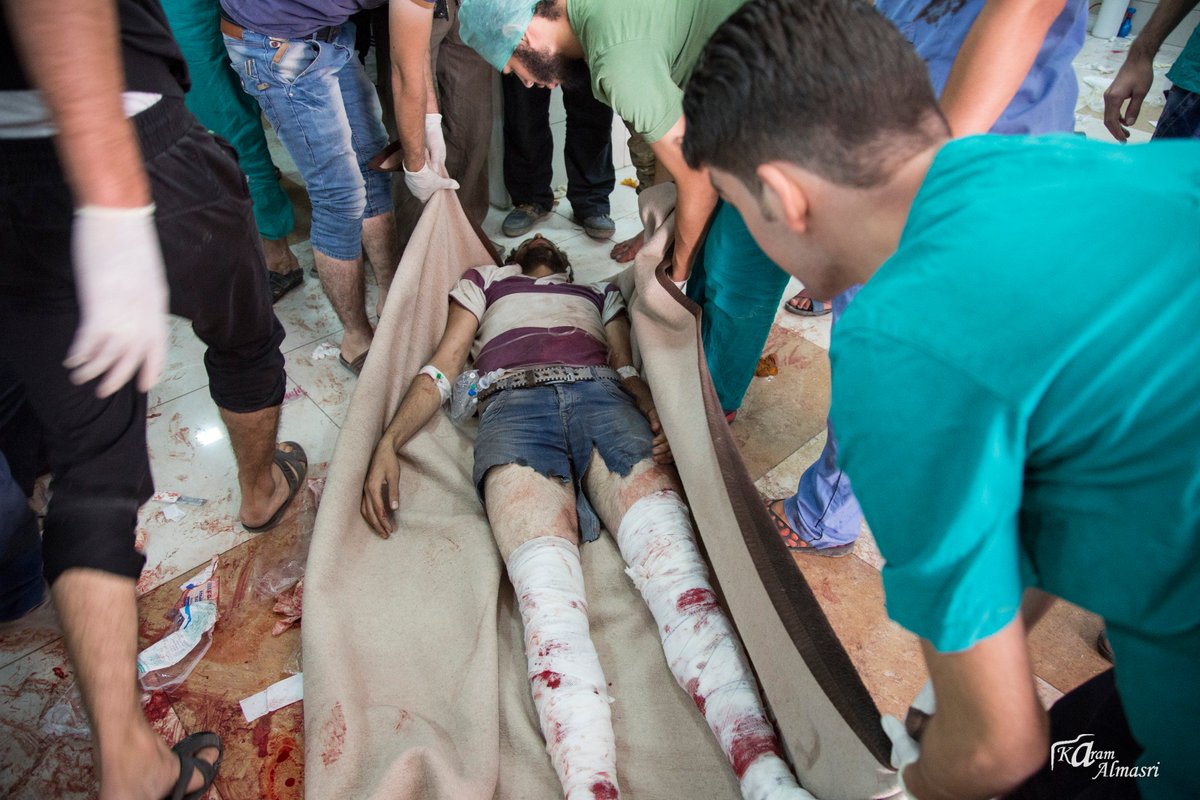
Pools of blood and shredded bodies on the streets of Aleppo because of bombardment by Syrian regime and Russia 24-9-2016 #HolocaustAleppo: image via Karam Almasri @KaramAlmasri25, 24 September 2016

Pools of blood and shredded bodies on the streets of Aleppo because of bombardment by Syrian regime and Russia 24-9-2016 #HolocaustAleppo: image via Karam Almasri @KaramAlmasri25, 24 September 2016

Pools of blood and shredded bodies on the streets of Aleppo because of bombardment by Syrian regime and Russia 24-9-2016 #HolocaustAleppo: image via Karam Almasri @KaramAlmasri25, 24 September 2016

Apocalyptic scenes in streets of Aleppo that were destroyed by Russia and Assad 24-9-2016 #HolocaustAleppo: image via Karam Almasri @KaramAlmasri25, 24 September 2016

Apocalyptic scenes in streets of Aleppo that were destroyed by Russia and Assad 24-9-2016 #HolocaustAleppo: image via Karam Almasri @KaramAlmasri25, 24 September 2016
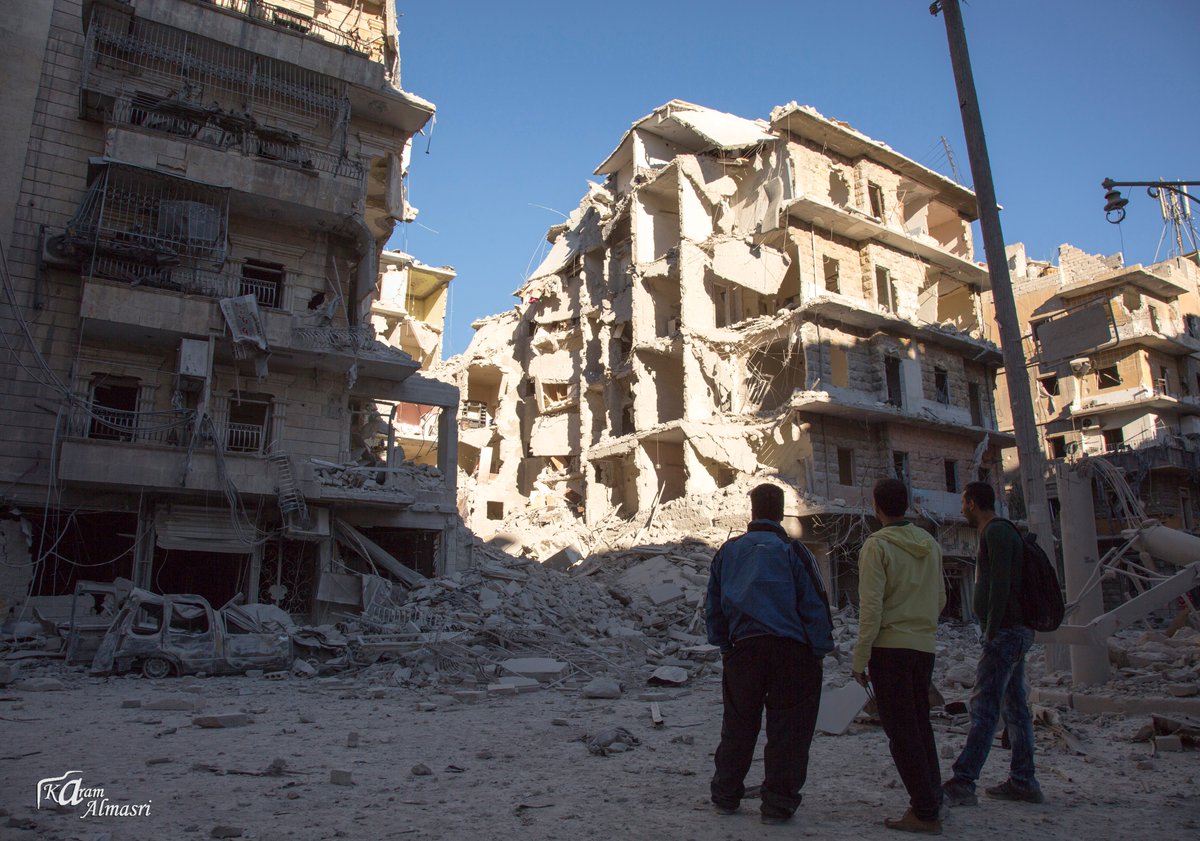
Apocalyptic scenes in streets of Aleppo that were destroyed by Russia and Assad 24-9-2016 #HolocaustAleppo: image via Karam Almasri @KaramAlmasri25, 24 September 2016

Apocalyptic scenes in streets of Aleppo that were destroyed by Russia and Assad 24-9-2016 #HolocaustAleppo: image via Karam Almasri @KaramAlmasri25, 24 September 2016

Kerry defends diplomacy as Russian airtsrikes pound Aleppo: image via Reuters Pictures @reuterspictures, 26 September 2016

A man walks on rubble after an airstrike in Aleppo, amid a Syrian army offensive on the city: image via Reuters Pictures @reuterspictures, 26 September 2016
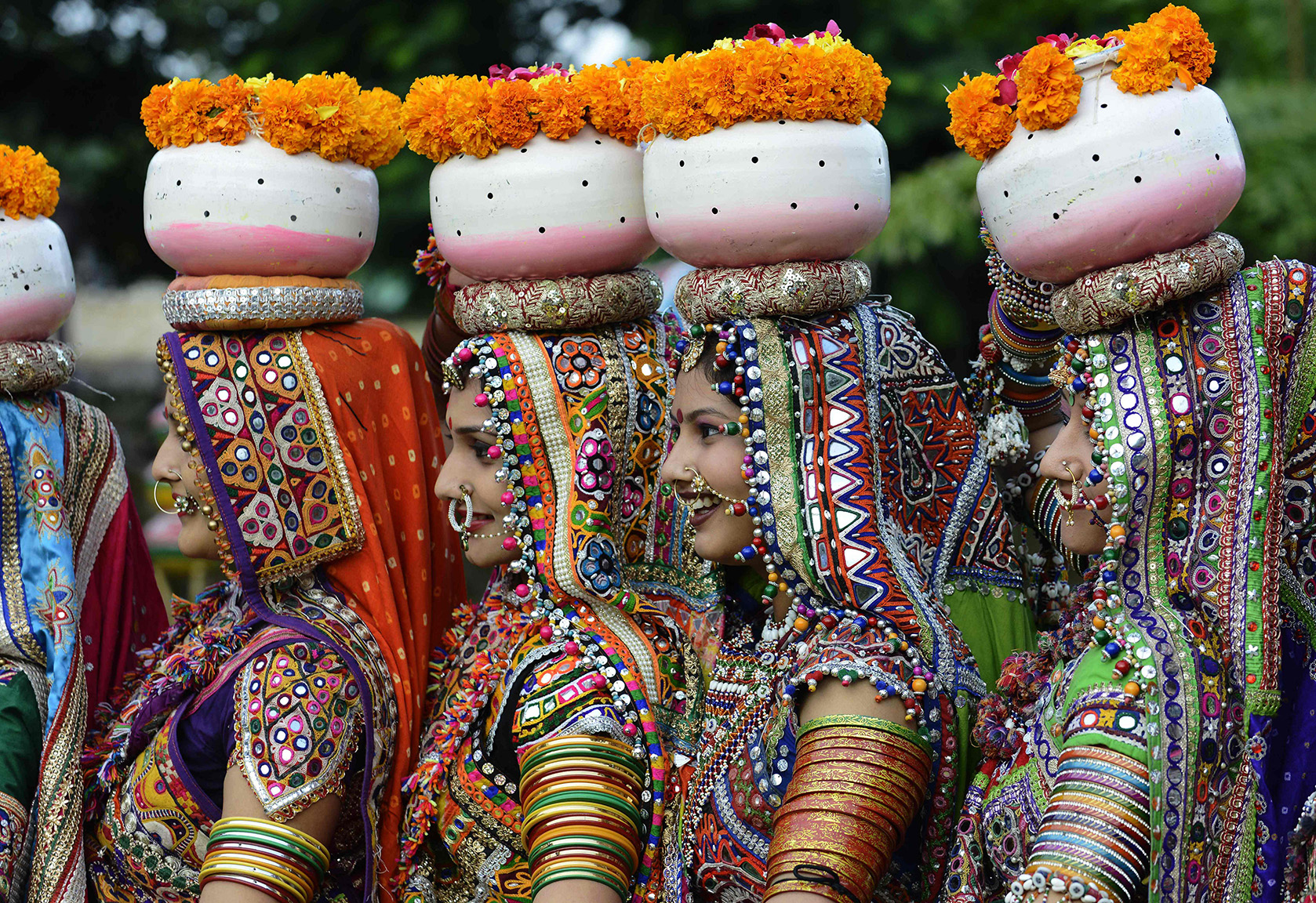


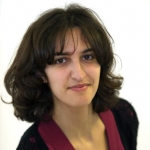
That was/is heartbreaking, Tom.
ReplyDelete